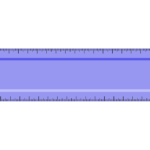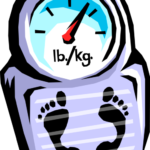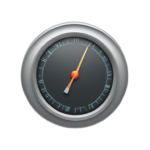Units Converter & Calculator
Area Converter
Calculate & convert area measures from popular area units

Temperature Converter
Calculate & convert temperature measures from popular area units

Time Converter
Calculate & convert area measures from popular area units

Length Converter
Calculate & convert temperature measures from popular area units

System of units
Welcome to the fast and fabulous world of unit conversions! From a scientist to a home chef, everyone may need to convert units to measure things. Whether it’s miles to kilometers, feet to meters, or ounces to grams, our express conversion kit is here to make your life easier.
Several ways are available to convert one unit to another to measure things. Metric conversion is one of the most common ways to convert imperial units to metric units. Inches and centimeters are also popular for conversion.
A system of units is also known as a system of measurements, and it usually consists of a collection of measuring units and rules that relate these units to each other.
The system of units has historical importance as it is widely used for different purposes of commerce, science, and more. Most units are included in the International System of Units or SI, a modern metric system. In the past, the measurement system was defined according to the region and had no specific standards or characteristics.
It was very inconvenient as there was no specific scale to measure things. To see this need eventually, strides and cubits were discovered that provided a way for scientists and machines to make measurements. These initial units spread worldwide with the growth of trade and science. With time, the system of units evolved according to need.
The present conversion system came into being, providing benefits and more rationale to businesses, scientists, engineers, and politicians. That’s why most countries worldwide adopt and agree on this metric system.
Fundamental Units
Fundamental units consist of basic quantities such as mass, time, and length. The types of fundamental units are: S.I. System of Units: It is one of the most common units with the full form of the Standard International System of Units. This system of units is accepted internationally. It includes seven basic units: meter, kilogram, second, ampere, kelvin, mole, and candela. F.P.S. System of Units: The full form of FPS is Foot Pound Seconds and a part of the system of units. According to this system, you may need to measure length into feet, mass into pounds, and time into seconds. C.G.S. System of Units: The full form of CGS is Centimeter Gram Seconds. In this system, you may need to measure length, weight, and time in centimeters, grams, and seconds respectively. MKS System of Units: This unit system consists of the unit’s length, mass, and time. But all these units measure in meters, kilograms, and seconds. Derived Units: The second type of system of units is the derived units. These units are usually used for quantitative measurement by combining two or more basic units like volume, capacity, and area.
Common Unit Systems Used Worldwide
These are the basic types of systems of units. Now, we will discuss the common unit systems that are used worldwide.
Metric System
The Metric system is one of the easiest systems that deals in meter, liter, and gram. It is valid all over Europe and the subcontinent. This system of units is considered one of the simplest units for measurements because they are easily converted from small units, such as grams or milliliters, to large units, such as meters or liters. They are widely used in most countries, especially in the European Union, where people prefer this system of units over the United States customary units.
Definition Of Metric System
The metric system is a system of measurement that consists of decimals. It is the total number of units on a scale divided by ten. The metric system has many uses, especially for measuring volume, distance, temperature, weight, and length. We measure objects in weight, time, length, and volume, and the metric system involves all these measurements. So, it is good to say that the metric system is a standard measurement scale based on a decimal system that includes the numbers in powers of ten. We apply these measures daily, such as medicine, defense, science, etc.
A common and simple example to understand the use of the metric system in our daily life is:
• The weight of this watermelon is 5 kilograms. • The doctor gave him 15 milliliters of tonic. • They run 2 kilometers daily.These are simple implementations of the metric system in our daily life. However, a meter is a base unit of length, and 1 meter is usually measured in units as the power of 10 times a meter.
Metric System Conversion
Metric system conversion is a process of converting one metric unit to another.
Example: If the height of a pillar is 89 meters, you may want to know its value in kilometers. You may need to apply the right conversion formula to convert the unit of meter into kilometer.
The most common metric conversions are: • Convert m to cm by multiplying 100. • Convert cm to mm by multiplying 10. • Convert km to m by multiplying 1000. • Convert kg to grams by multiplying 1000. • Convert grams to mg by multiplying 1000. • Convert liters to kiloliters by dividing 1000. • Convert ml to liters by dividing 1000.
Imperial System
The imperial system of units is very common in British countries. It involves the basic units of measurement such as pounds, inches, and feet. These units are also convertible into smaller or larger units but are followed by complex processes.
The imperial system of measurements is popular in Canada, Australia, the United Kingdom, etc.. Still, it is not valid in the United States. The system was first introduced in 1824 and is still valid in various countries.
The way of measuring things in the imperial system differs from our normal system. It measures things in gallons, points, and yards rather than meters, liters, centimeters, and millimeters.
Definition Of Imperial System
The imperial system deals in commonly used units such as gallon, ton, inch, pound, pint, etc. Establishing a unit system for a country involves standardizing and formulizing depending on the preferences for one specific unit over the other.
While using an imperial system of measurements, we may need to measure the height in inches, weight, pounds, volume in gallons, etc.
In the UK, units, pounds, gallons, inches, pints, etc., are used commonly, and they become a part of their curriculum. They use these imperial system units while cooking, driving, shopping, and many other professions. However, the metric system of units is popular in other countries like European and subcontinent countries. Learners may need to learn about all the measurement systems. Still, the main focus in these regions is on the metric system, which is more commonly used daily.
Basic Dimensional Measures: Area, Volume, And Length
Area, volume, and length are the basic dimensional measures of geometry’s one-, two-, and three-dimensional objects. These are magnitudes that represent the size of any object or thing that is under observation.
Let’s explore these three dimensions below
What is Area?
Area is a specific region confined by any shape of an object. The space surrounded by the figure of any geometric shape is called the area of this shape or figure. It is important to know that the area only depends on a certain shape’s dimensions and properties. It means that different shapes refer to different areas. For instance, a square’s area differs from a circle’s area. It is also important to remember that the area of similar shapes may also differ from each other until the dimensions of these shapes are equal. For example, the area of two square boxes will be equal if the L1 and L2 and breadth of the first box will equal the L1 and L2 and breadth of the second box.
Unit of Area
According to the International System of Units, the unit of area is square meters, and it has the symbol (m2). It is a derived unit.
Area Unit Converter
An area is a scalar quantity that consists of two-dimensional geometric figures. You can measure the area by multiplying the length by length (Length x Length), and the unit for the area converter is mm2, depending on the object you want to measure.
What is Volume?
Volume is the quantity of the space a three-dimensional object or shape occupies. You can describe the volume of a cube by the edge lengths of the cube. For example, if the edge length of a cube is 6 cm, then its length is: V=6 x 6 x 6 cm is equal to 216 cubic cm.
Unit of Volume
The International System of Units describes the unit for volume measurement called Cubic meters. It is a standard unit for volume. The other basic units for volume are cubic inches, cubic centimeters, cubic feet, etc.
Volume Unit Converter
Volume has a three-dimensional measurement and is expressed in cubic units. A common example is cubic meters and cubic centimeters.
What Is Length?
Length is usually measured by how long the sides of an object are. You can measure the length of any object by measuring the distance between two points of the object.
Unit of Length
The units for length are not specific, as they only depend on the size or distance between two points. Usually, you can measure length in yards, feet, inches, miles, meters, and inches.
Length Unit Converter
The most common unit for length is a meter. It can be a horizontal or vertical measurement of 1/10 the mile or 1000 meters. Some other special units to convert length are centimeters, which only depend on the type of measurement you want to take, such as long-distance or short distances.
How do you convert measurements?
It is easy to convert measures by following a simple rule. The most common and basic rule to resolve the conversion problem is multiplying the larger units to convert them into smaller units and dividing smaller units into larger units.
What is the measurement formula?
The measurement formula is a ratio of a certain quantity, which you can use to compare the quantities with smaller units. You can use these measures to find area, volume, length, size, and other amounts.
How do you convert SI units?
It is easy to convert the SI units by multiplying and dividing them by 10. You may need to multiply or divide once or more than once. You may need to multiply or divide the number of units you want to convert as many times as you need to multiply or divide them by 10.
What Are the Metric System Prefixes?
The official metric system prefixes are kilo, milli, deca, centi, myria, and deci. These are driven by Latin and Greek numbers and represented by lowercase symbols. CGPM approves these prefixes for use.
What Are The 7 Fundamental Quantities and Their Units?
• Length (meter) (m) • Mass (kilogram) (kg) • Time (second) (s) • Electric current (ampere) (A) • Thermodynamic temperature (kelvin) (K) • Amount of substance (mole) (M) • Luminous intensity (candela) (Cd)


